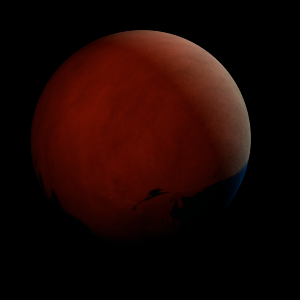|
|
Space Astro
|
Info for exoplanet "Calpero Tifran"
| Scientific (actual) data |
|---|
| Name | Kepler-1351 b |
| Planet status | Confirmed |
| Radius | 0.058 |
| Orbital period | 0.916141 |
| Discovered | 2016 |
| Updated | 2021-02-05 |
| Tconj | 2454960 |
| Publication | Announced on a website |
| Detection type | Primary Transit |
| Alternate names | 2MASS J19342609+4211516 b, K02798.01, KIC 6697756 b, KOI-2798 b, KOI-2798.01, WISE J193426.04+421152.1 b |
| Star name | Kepler-1351 |
| Right ascension | 293.61° |
| Declination | 42.2° |
| Mag j | 12.225 |
| Mag h | 11.573 |
| Mag k | 11.47 |
| Star distance | 241 |
| Star metallicity | -0.03 |
| Star mass | 0.7 |
| Star radius | 0.67 |
| Star age | 4.17 |
| Star temperature | 4439 |
| Star alternate names | 2MASS J19342609+4211516, KIC 6697756, KOI-2798, WISE J193426.04+421152.1 |
| Wikipedia article | Kepler-1351 b |
Back
| |
| Fictional info (?) |
|---|
| Suggested name | Calpero Tifran |
| Planet type | Cold planet |
|
| Atmosphere | Ozone | 57% |
| Carbon dioxide | 37% |
| Nitric oxide | 4.9% |
| Molecular hydrogen | 0.03% |
| Ammonium hydrosulfide (NH4SH) | 0.0002% |
| Atmospheric pressure | 40 bar |
 |
| Moon | Naiadtur Gamoscu | Small round rocky asteroid |
| Taythea Sinixthi | Medium-sized irregular ice planetoid |
| Thyspho-lasiji | Huge round rocky planetoid |
| Google search for Calpero tifran |
|
Website by Joachim Michaelis
|
|
|
|